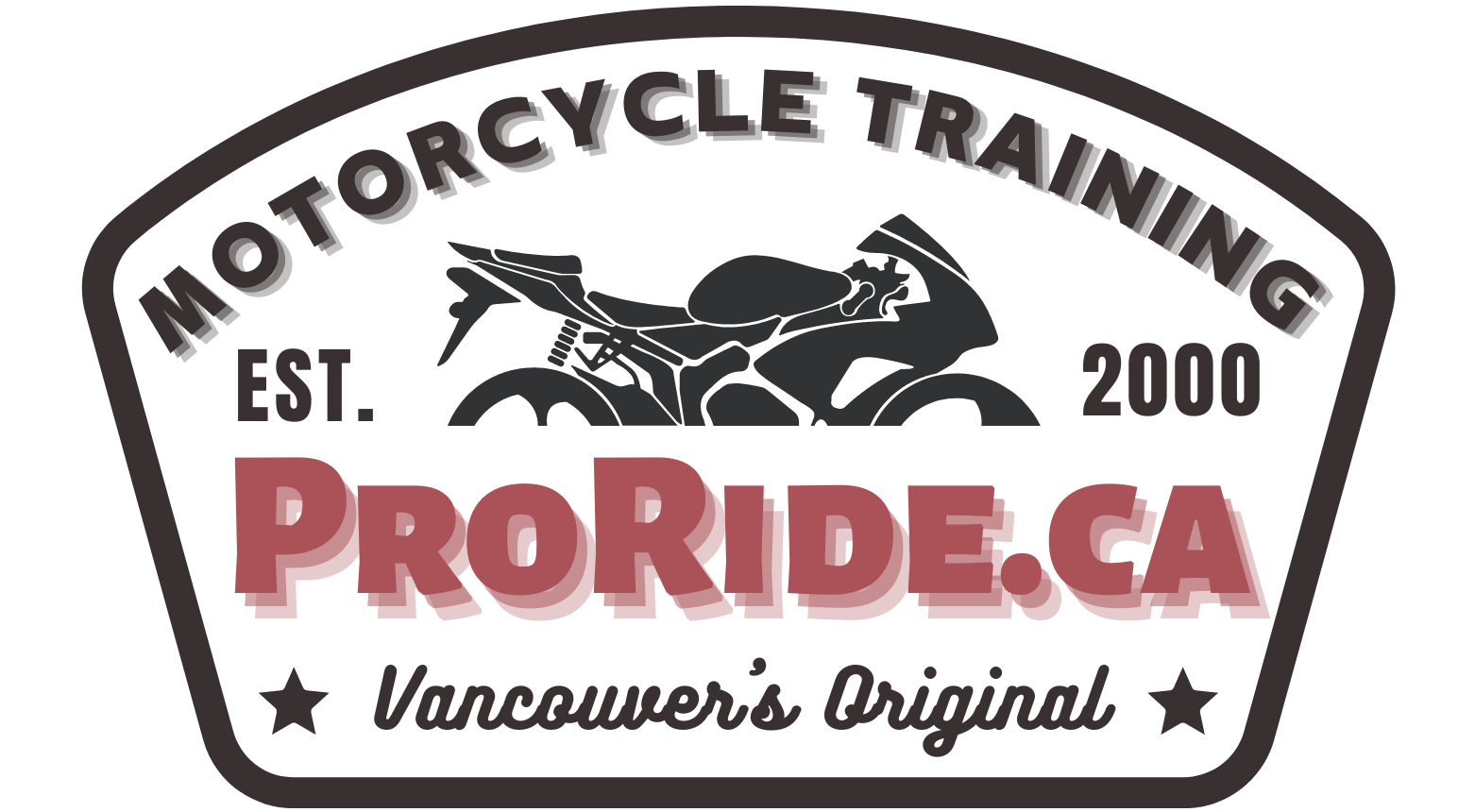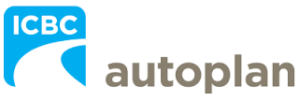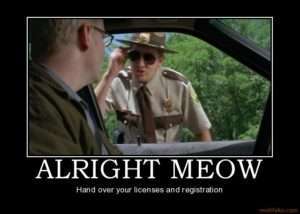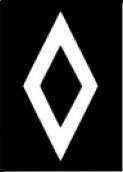More Notes on How to pass the ICBC Motorcycle Road Test
Even more tips and tricks about what it takes to acquire your full Class 6 License in BC.
ICBC ROAD TEST
Skills Tested
Other Links
- Theory vs. Practice
- Observe and obey *all* signs and signals
- Dropping your bike is an automatic fail — Look Straight, Brake Straight!!
- T-CLOCK is not marked, but you will be asked to display hand signals in the parking lot.
- Do *not* use hand signals in traffic. You can lose marks for taking your hands off the bars!
- Both hands off the bars is an automatic fail!
- On purpose or accidental, your bike in Neutral is an automatic fail!
- Touching a white solid line could mean a failure. Stay away from them.
- ICBC is super strict on 30km zones. Stay under 30 and above 25kms.
- 2 feet down is not a fail. If you have your brake foot down, engage the front brake. They must see a brake light at a stop.
- ICBC will follow behind you, communicate via radio
- The burden is on them to keep up with you;
- Ride like you’re by yourself;
- Being nervous is natural. Pretend their voice is a GPS guiding you.
- When they give you direction, take a breath and set yourself up for the movement. A lot of people rush and panic and ultimately make mistakes. Be smooth.
- Don’t slow down or wait for them unless specifically instructed to do so.
- Make head scans and shoulder checks clean, not sloppy. Get them all in and don’t rush them. They cannot see your eyes, they can only see your head moving.
- The burden is on them to keep up with you;
- We cannot predict the road test route.
The following skills will be marked:
Speed Control
- Yellow speed signs indicate a suggested speed; scan the area ahead and adjust speed accordingly.
- Observe speed limits on *White* speed signs
- Assume 50km/h maximum speed limit where there is no sign posted
- Multi-lane traffic
- Other drivers tend to treat speed signs as a “Minimum” speed limit;
- It may not be safe to ride too slow;
- You may ride up to + 5km/h in multi-lane traffic (city streets & highways) when appropriate.
- Watch for *White* speed signs in school & playground zones and construction zones
- Make certain to adhere strictly to speed limits in these zones
- Outside of school or playground hours, speed may not be governed by the *white* sign, but the yellow sign remains in effect; approach with caution and slow down if children are present.
- School zones not enforced during spring break, summer break, winter break and stat holidays, unless otherwise signed.
- Highway
- Merging: First match speed of traffic, zipper in, then adjust to safe & appropriate speed
- “Merge fast and merge last” Use up all the merge lane.
- You can fail for merging too slow!!
Communication
- Turn signals are required in traffic as well as in side streets and parking lots:
- Make sure to indicate your manoeuvres:
- No later than 3 seconds/¼ block prior
- Up to 4 seconds to cancel turn signal
- You DO NOT use a signal when moving lane positions.
- Don’t forget to use turn signals when moving into or out of a parking space, as well as when pulling over towards or pulling away from the side of the road
Observation
- Based on the movement of your helmet:
- Burden is on you to prove you were looking; make sure to turn your helmet.
- If your helmet is a solid color with no markings, putting a strip of Painter’s Tape on the back of your helmet can help the examiner see you turning your helmet.
- Scanning:
- Move helmet to check left to right to left (in that order)
- Before you pass through a controlled intersection (scan sidewalk to sidewalk);
- Before you cross a railway track
- Be especially mindful when the light turns green, as trucks or buses approaching from the left or right may run the red light if they are unable to stop safely ;
- Move helmet to check left to right to left (in that order)
- Shoulder Check
- Move helmet to check blind spot area *behind* your shoulder:
- Before you change lanes
- Before you change Lane Position
- Basically, anytime you move side to side.
- Standing right turn
- If stopped, scan Left to Right, then Shoulder Check Right to check for pedestrians and cyclists coming up from behind you on your right, and then Left again. This must all be done before proceeding.
- Do not stop to shoulder check if the light is green!
- Standing Left Turns
- If stopped beyond the white line, Shoulder Check Left for pedestrian traffic before proceeding.
- Move helmet to check blind spot area *behind* your shoulder:
- When stopped, make certain to complete Scan/Shoulder Check *before* moving off, while foot is still on the ground!
Space Margins
- 2 seconds is the *Minimum* following distance; we recommend you aim for roughly 3-seconds of following distance. Be prepared to manage your space margin appropriately.
- Lane Position is marked
- Use appropriate Lane Position;
- Position yourself to maximize Space and Visibility, but remember that you don’t necessarily get both at the same time.
- You *must* shoulder-check before changing Lane Positions;
- Riding too close to the painted lines is considered lane splitting — you have a whole half of the lane!
- Move to the “Inside” position while turning at intersections; protect yourself from the car behind you attempting to go straight.
- Move to the *Outside* position riding through blind curves to maximize your line-of-sight.
- Ride away from curbs on a multi lane road; remember curbs are not always on your right;
- Yields and Merges; you should ride in the dominant lane position.
- If riding in a lane which directly opposes traffic, be prepared to manage your space as you approach these hazards:
- Crest of a blind hill
- Oncoming car making a left turn
- Oncoming truck or bus
- Use appropriate Lane Position;
- Stopping:
- Stop behind the white stop line at a stop sign or red light, or behind the sidewalk or crosswalk if there is no white stop line.
- You must stop for Yellow lights, unless you cannot complete your stop safely and behind the white stop line.
- Your foot *must* touch the ground to indicate a full stop.
- Keep a safe space margin for left-turning vehicles approaching from your right
- At a red light, stop behind the white line on the inside edge of the traffic light sensor switch (unless this puts you on the grease strip)
- If there is a vehicle stopped in front of you, make certain to stop no closer than 3m/10ft behind the vehicle in front of you. This will provide you with room to escape if you are suddenly threatened from behind.
- No stopping in Pedestrian crosswalk
- Standing left turn:
- Only one vehicle at a time may enter an intersection and wait to make a left turn;
- You must advance into the intersection for a left turn so long as there are no other vehicles ahead of you.
- If there is a vehicle ahead of you waiting to turn left, stop behind white stop line while waiting for your turn;
- Careful not to cut corners or cross lines when turning.
- Standing right turn:
- You may turn right at a red light (unless otherwise signed), however you must come to a Full Stop (foot on the ground) behind the white line before turning.
- Nose forward as required if you are unable to see clearly before initiating your right turn
- Full stop *not* required at a Yield sign; stop only if necessary.
Steering
- Parking:
- If asked to park at the side of the street, pull over (look straight, brake straight), then back up (360º shoulder checks) to 45º angle against the curb.
- Makes bike visible to drivers looking for a parking space
- Gives you maximum visibility when pulling out into traffic
- You cannot reverse against a hill.
- Turn signal *Left* to pull out from the curb position
- Parking Lot
- A Reverse Stall Park is required at the end of the road test;
- Pull over just past empty parking spot — Look straight, brake straight!!
- 360º shoulder check
- Make certain to use proper turn signals for parking, as well as for pulling out.
- A Reverse Stall Park is required at the end of the road test;
- Don’t forget to Scan before leaving
- If asked to park at the side of the street, pull over (look straight, brake straight), then back up (360º shoulder checks) to 45º angle against the curb.
- U-turn mid-block on side street
- Where you look is where you’ll go — Don’t look at the curb!!
- Pull over and Stop before beginning your U-turn;
- “Loud bike, Slow bike” and “Look Left, Turn Left”!
- Don’t forget turn signals and shoulder checks!
- Traffic Circle/Traffic Calming
- 2 intersecting single-lane streets with a circular obstruction in the middle, usually found in residential areas;
- This is not a roundabout — Treat this like any other uncontrolled 4-way intersection!!
- Yield to traffic already coming through the circle from your left;
- Be Careful! Not everyone knows the rules for a traffic circle!
- Use correct turn signals for:
- Right turns
- Straight through
- Left turns
- U-turns
- Make certain to signal in advance of the intersection!
- Roundabouts
- Watch for Roundabout signage;
- No turn signal required to enter; apply a right turn signal *only* when you are ready to exit
- You are not permitted to change lanes inside a Roundabout.
More Resources
On Test Day
- You are encouraged to show up 30 minutes prior to your appointed time.
- You must Sign in at the ICBC desk no less than 15 minutes prior to your appointment time;
- Do not park in the spaces designated for “Road Tests”; park motorcycles in the designated motorcycle parking space.
- Helmet or dash mounted video cameras are not permitted!
- Bring 2 pieces of Accepted ID
- At least one Primary ID
- Must not be expired
- ICBC Fees
are not included in course tuition:- Any outstanding fines must be paid
- GLP
- $35 Class 8 Road Test
- $17 license upgrade
- $75 First 5-year GLP N licence
- $35 Class 8 Road Test
- LDL
- $50 Class 6 Final Road Test
- $17 license upgrade
- $75 for 5-year renewal
- $50 Class 6 Final Road Test
- ID requirements, upgrade, and renewal fees may vary for Enhanced Drivers Licenses
Road Test Scheduling
- Road tests are booked Wednesdays or Thursdays out of Burnaby when you are ready to take your test;
- Students who ride a motorcycle ≥1000kms prior to the road test are more likely to pass on 1st attempt
- You can practice most Road Test skills even when driving your cars!
- Road tests are rain or shine; Don’t forget to practice riding in the rain!!
- Motorcycle Bike Rentals are available for practice for a fee through Matt deefishbone@hotmail.com 778-895-4249;
- ProRide can supply a 250cc bike for your Road Test if required, or BYO
- ProRide bikes for your road test are available for $100+gst
- Alternate locations
- Students who ride a motorcycle ≥1000kms prior to the road test are more likely to pass on 1st attempt
- To book road test
- Reserve your time immediately using the ProRide Online Road Test Booking System; dont wait!!
- Up to 6 week waiting list in peak season; make sure to complete your test prior to the expiry date printed on your license.
- 48 hrs to cancel your road test or ICBC will charge you a fee.
- Make sure to book a practice road test the Tuesday prior in the same week (or earlier)! Don’t forget to RE-READ these notes!!
Retesting
- Road Tests
- You may use your own Motorcycle for your test.
- You can use a school motorcycle for your road test for a $100+gst fee.
- You do not have to test on a 200cc+ motorcycle. Anything less than 200cc and you will have a passenger restriction only.
- MSA
- If your Learner’s License expires, you’re back to Square 1.
- Go back to ICBC and redo the Motorcycle Knowledge Test.
- Re-ride the Motorcycle Skills Test to have your Supervisor and Speed restrictions removed.
- MSA retests are free at ICBC or $60 at ProRide. This fee includes the use of the ProRide Motorcycles, Gloves, and Helmets.
- ProRide cannot guarantee that you will pass any of the required testing.



